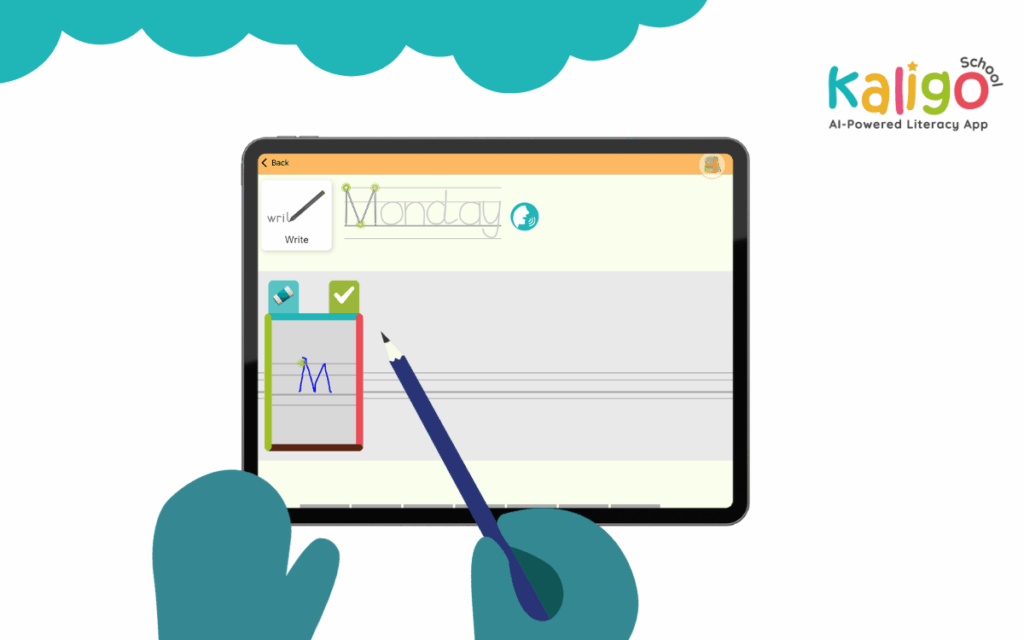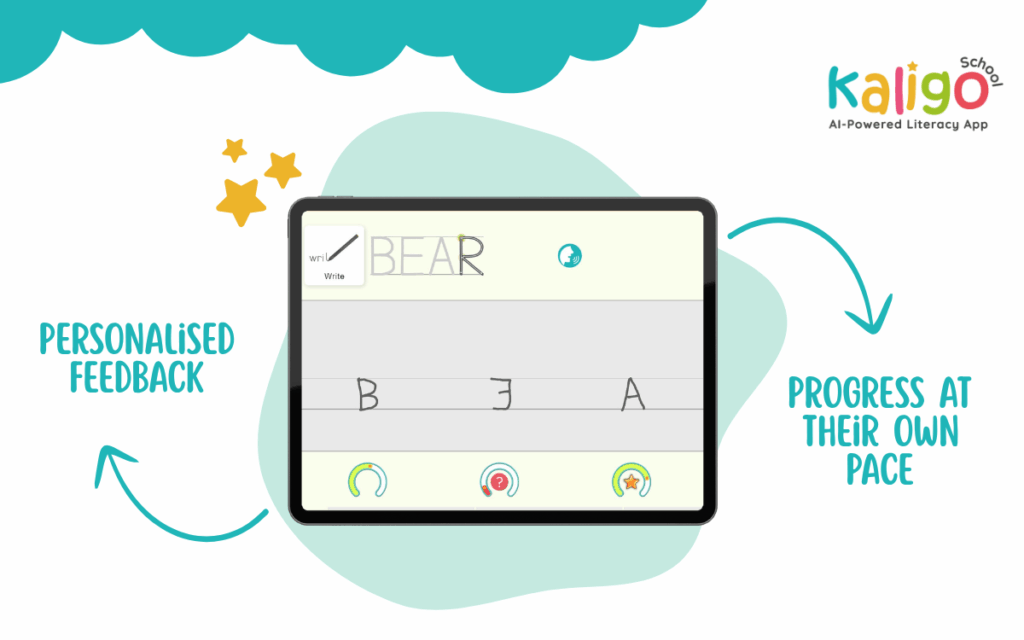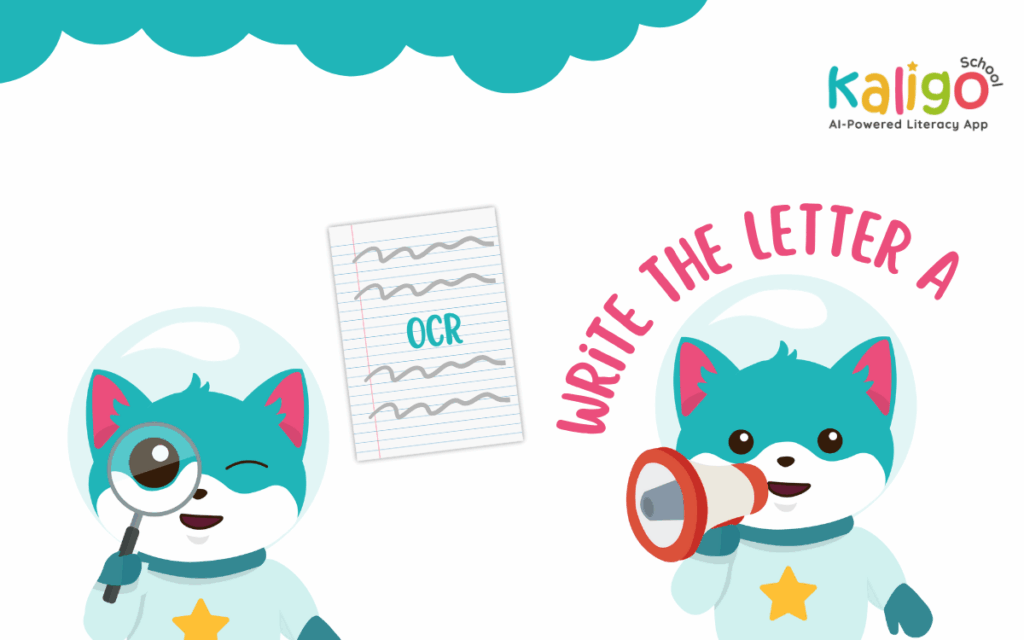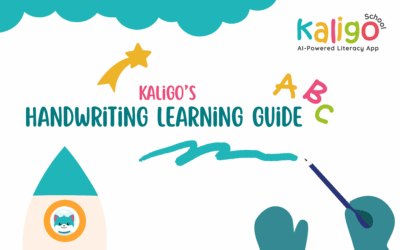Handwriting remains a foundational skill in today’s classrooms, shaping the way children think, learn, and communicate. However, mastering handwriting can be challenging for many students, and providing individualised feedback requires significant time and attention However, this is something teachers often struggle to manage in a busy classroom.
This is where Kaligo comes in. Developed in collaboration with educators, Kaligo combines traditional handwriting instruction with the power of artificial intelligence (AI). Its mission is simple yet ambitious: to make handwriting learning more engaging, adaptive, and effective for every child, while giving teachers practical tools to personalise instruction and track student progress.
By leveraging AI, Kaligo bridges the gap between paper-based and digital learning, offering real-time insights that empower both teachers and students. In this article, we’ll explore why Kaligo uses AI, how its technology works, and what the future holds for handwriting education.
Why Kaligo uses AI
Kaligo was created to answer a fundamental question:
How can digital technology help every student master handwriting, including those who struggle, while supporting teachers in their daily work?
It’s important to note that Kaligo is not designed to replace teachers. Instead, it works alongside them, complementing traditional teaching methods while providing personalised, actionable feedback.

Powered by AI, Kaligo analyses in real time how letters and words are written, offering immediate feedback tailored to each student. The system goes beyond evaluating the final shape of letters: it also examines how letters are formed and connected, helping students develop the proper motor skills needed for fluent, legible handwriting.
This approach allows children to correct mistakes quickly, improve their writing quality, and gradually automate the writing process. Most importantly, improvements made on the tablet transfer directly to paper, demonstrating that Kaligo effectively complements traditional classroom instruction.
How Kaligo’s AI works
Kaligo’s AI is designed to analyse each student’s handwriting in real time. During exercises, it evaluates letters according to three main criteria:
- Letter shape: Checks if the letter matches the model.
- Stroke direction: Verifies that each stroke follows the correct path (e.g., top-to-bottom or left-to-right) as taught in school.
- Stroke order: Ensures multi-stroke letters are written in the correct sequence to promote smooth, fluid handwriting.

Based on this analysis, Kaligo provides a visual scoring system. Underneath each letter, students will see a horseshoe symbol. This symbol will also more or less fill with colours, depending on how well the students performed :
- Red: Multiple errors in the letter.
- Orange: Letter shape is mostly correct but can be improved.
- Green: Letter is written correctly.
When a letter is written particularly well, the student earns a star, providing positive reinforcement and motivation.
Detailed feedback
In addition to the analysis, Kaligo also provides targeted feedback to guide improvement. Visual indicators on the writing of the child also helps them understand and correct their work:
- Red dot: Indicates a pencil lift was missed or incorrectly placed.
- Orange mark: Shows that the writing does not align properly with the ruled lines.
This targeted feedback does however not flow into the general scoring of the student’s work. If a student receives a red or orange score, they can immediately compare their writing with the model. Kaligo then adapts the learning path, prompting the child to practice letters they find most challenging immediately after the exercise.
This timely feedback helps children:
- Understand mistakes immediately
- Correct handwriting errors on the spot
- Progress at their own pace
Over time, this approach helps students develop fluent, legible, and confident handwriting, both on tablets and on paper.
Want to know more? Read our in-depth article about how AI powers Kaligo’s analysis and feedback!
Developing Kaligo’s AI
Learning to write is a complex cognitive and motor process, and approaches differ across countries. Differences appear in the stages of learning (e.g., capital letters, print script, or cursive) and in how children develop handwriting skills (stroke direction, letter formation, etc.).
Kaligo is designed to meet the objectives of French, English, German, Swiss, and Luxembourgish curricula, ensuring a seamless learning experience. Teachers can access the exact letter forms and handwriting styles used in their classrooms directly within the app.
To ensure compliance with each curriculum, every version of Kaligo undergoes a thorough adaptation process:
- Curriculum analysis: Kaligo’s teams collaborate with local educators to define curriculum needs and create reference letter models for the AI.
- Handwriting collection: Primary school children reproduce the models, which are then analyzed and annotated to train the AI. No additional handwriting samples are collected during normal use.
- Validation: Final testing ensures the AI performs reliably and integrates seamlessly into classroom routines.
This rigorous approach makes Kaligo’s AI unique, high-performing, and classroom-focused, built specifically to support handwriting instruction worldwide.
What’s next for Kaligo
Looking ahead, Kaligo aims to cover the entire learning journey: writing, reading, spelling, phonics, and more. Innovations in development include:
- An OCR model for children’s handwriting, bridging paper-based learning and AI analysis
- A modernised voice interface, offering natural, personalized interactions
- Tools to support parents in guiding children beyond the classroom

Kaligo’s AI adapts to each child’s pace and learning stage, ensuring practice is personalised, meaningful, and effective. Every feature serves a clear educational purpose, addressing real needs while prioritizing children’s well-being.
We believe this is just the beginning of what AI can bring to education. If you’re passionate about helping every child learn with confidence and joy, follow our journey and explore how Kaligo is shaping the future of handwriting education.
Want to follow Kalicat on more of his adventures and incorporate a complete library of scaffolded, interactive lessons to build essential reading and writing skills step by step? Fill out our trial form and try Kaligo completely for free for 14 days.
Start now with Kaligo and watch your class’ literacy skills improve, and your students learn with joy!




